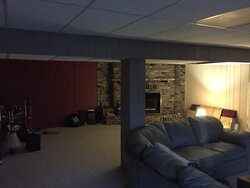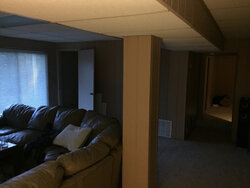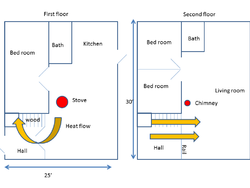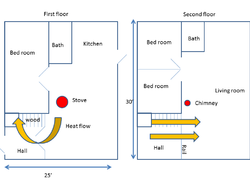Long time burner, and member...but sadly I moved last year to a house without a wood stove 
Anyway, I'm in the market again. My new to me house is two stories, 1800 square feet. About 1000 downstairs (daylight basement) 800 upstairs. Upstairs is where my kitchen, big bathroom, dining room and bedrooms live. Downstairs is where the TV, ham radio (nerd) laundry room and another bathroom live.
Downstairs is also complete with a gas fireplace.
Putting a stove upstairs is basically out. Downstairs is most likely where an insert would go.
The stairway is centrally located but fairly narrow and steep. (1970's)
I have a heat pump, which is cheap. But I flat just miss heating with wood.
Which leads to my question... I know this isn't the best scenario but...has anyone, ever, ever had any luck getting some heat upstairs when heating with a daylight basement stove? I understand it's not ideal, but is there a chance?
Later, we'll talk about stove options..
Shot of the proposed stove room. Please ignore the mess



Anyway, I'm in the market again. My new to me house is two stories, 1800 square feet. About 1000 downstairs (daylight basement) 800 upstairs. Upstairs is where my kitchen, big bathroom, dining room and bedrooms live. Downstairs is where the TV, ham radio (nerd) laundry room and another bathroom live.
Downstairs is also complete with a gas fireplace.
Putting a stove upstairs is basically out. Downstairs is most likely where an insert would go.
The stairway is centrally located but fairly narrow and steep. (1970's)
I have a heat pump, which is cheap. But I flat just miss heating with wood.
Which leads to my question... I know this isn't the best scenario but...has anyone, ever, ever had any luck getting some heat upstairs when heating with a daylight basement stove? I understand it's not ideal, but is there a chance?
Later, we'll talk about stove options..
Shot of the proposed stove room. Please ignore the mess






